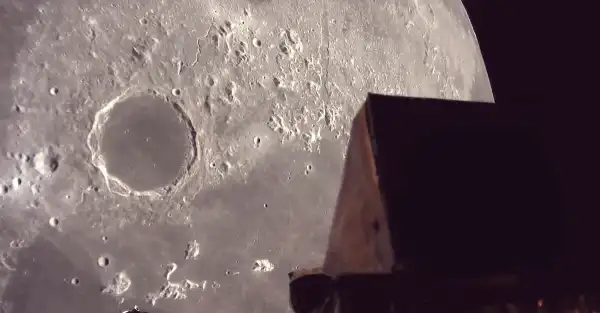
A Japanese private lunar module is heading to the Moon, planning to land in the uncharted far north using a mini-rover.
Tokyo-based ispace's moon landing attempt on Friday local time marks the final stage in the fast-paced commercial lunar race.
The relaunch comes two years after the company's first mission to the moon ended in a crash landing, prompting the name of its next lander, Resilience.
Resilience carries a rover with a shovel for collecting lunar soil, as well as a toy red house created by a Swedish artist that will be placed on the dusty surface of the Moon.
Long considered the preserve of governments, the Moon became a target for private companies in 2019, and has since experienced more failures than successes.
Launched from Florida in January on a long journey, Resilience entered lunar orbit last month.
It flew alongside SpaceX's Blue Ghost, which reached the Moon faster and became the first privately-owned craft to successfully land on its surface in March.
Another American company, Intuitive Machines, arrived on the moon a few days after Firefly. But the tall, thin lander fell face-down into a crater near the moon's south pole and was declared dead within hours.
Resilience is targeting the top of the Moon, a less challenging place than the dark bottom.
The ispace team chose flat terrain with few rocks in Mare Frigoris, or the Sea of Cold, a long, narrow region filled with craters and ancient lava flows that stretches across the near side's north pole.
Once installed, powered and connected, the 7.5-foot Resilience craft will begin sending back images, expected to occur within a few hours or more after landing.
According to ispace, it will be at least a weekend before the lander lowers the rover onto the lunar surface.
Made from carbon-fibre-reinforced plastic with four wheels, the European rover from ispace, called Tenacious, is equipped with a high-quality camera for studying the terrain and a shovel for collecting lunar soil for NASA.
The rover, weighing just five kilograms, will hover next to the lander, circling at less than an inch per second.
It can travel up to two-thirds of a mile from the lander and must remain operational throughout the two-week mission, throughout daylight hours.
In addition to scientific and technical experiments, there is also an artistic element.
The rover features a tiny red Swedish-style house with white trim and a green door, which creator Mikael Genberg has dubbed the “Moon House,” which can be installed on the lunar surface.
Takeshi Hakamada, CEO and founder of ispace, sees the latest lunar mission as “just a step forward,” with the next, larger lander set to launch by 2027 in partnership with NASA, with more to follow.
“We’re not looking to corner the market. We’re looking to create a market,” Jeremy Fix, chief engineer at ispace’s U.S. subsidiary, said at a conference last month. “It’s a huge market with huge potential.”
Mr Fix noted that ispace, like other companies, does not have “infinite resources” and cannot afford repeated failures. Without disclosing the cost of the current mission, the company said it was less than the first, which exceeded $100 million.
Sourse: breakingnews.ie






